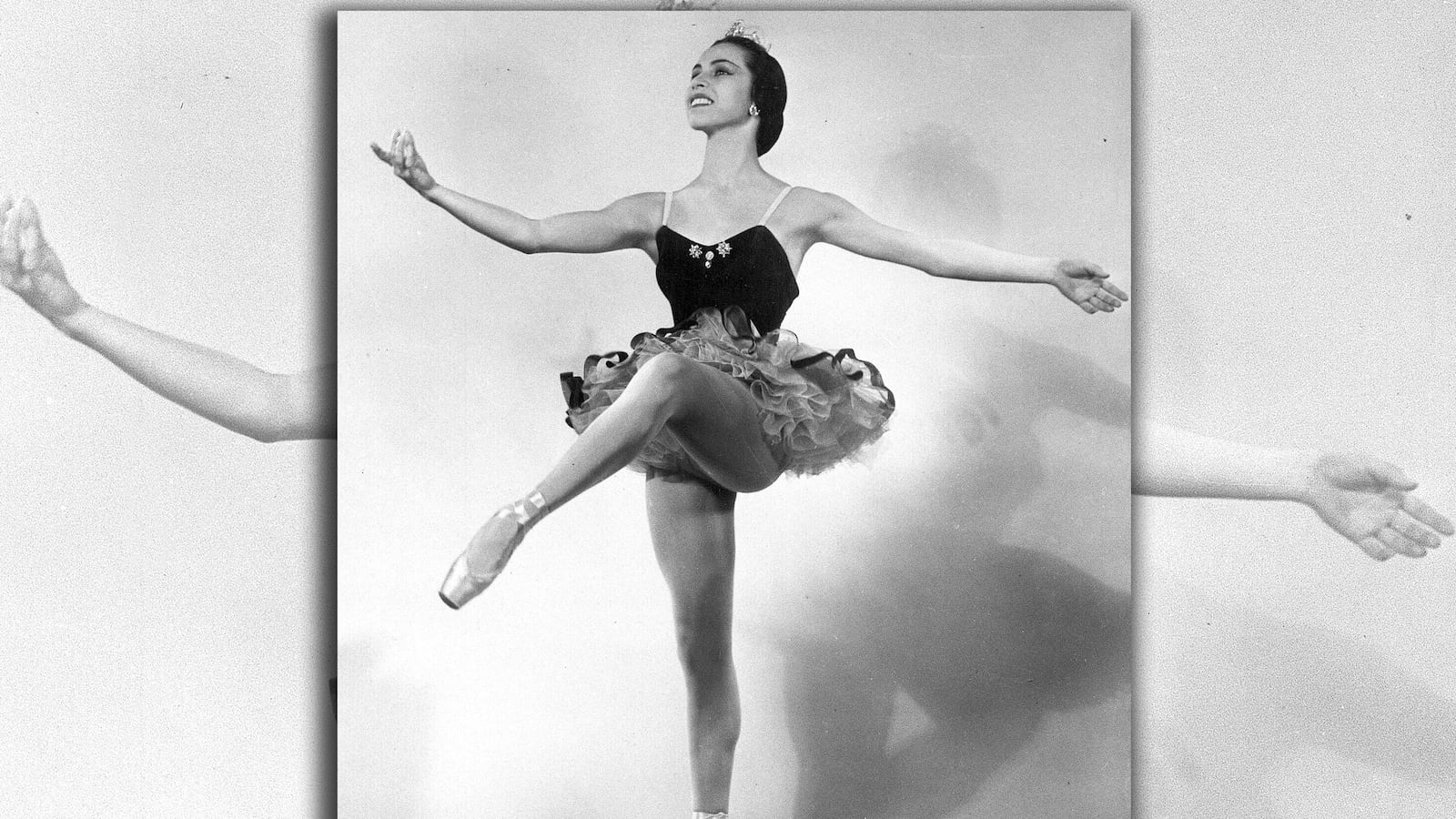At the time Maria Tallchief was attempting to break into the world of ballet, many fellow dancers were changing their names to sound Russian. Tallchief refused, and with her father’s Osage Indian name went on to become one of the 20th century’s most renowned ballerinas, performing on stages across Europe. “Above all, I wanted to be appreciated as a prima ballerina who happened to be a Native American, never as someone who was an American Indian ballerina,” she wrote in her 1997 autobiography, Maria Tallchief: America’s Prima Ballerina, though she noted that her heritage “inspired her.” On Thursday, in a Chicago hospital, the 88-year-old spritely stage legend succumbed to complications from a hip broken in December.

Oklahoma-born Tallchief rose to fame in the 1940s, when, at 17 she joined the Ballet Russe de Monte Carlo. Though she refused to conform her surname, she did swap her first name, Elizabeth, for a spin on her middle name, Marie. Dance was in her blood—Tallchief’s sister, Marjorie Louise, later became the first American Indian to be première danseuse étoile, or the first star dancer, in the Paris Opera.
Tallchief was soon married to famed Russian choreographer George Balanchine, despite the 21-year age difference. As his muse, she went on to originate the lead roles in many of his ballets: from the Swan Queen in his adaptation of Swan Lake, to the Sugar Plum Fairy in his take on The Nutcracker. She wooed audiences and critics with “regality and grace,” along with, “precise footwork and an athleticism that dazzled without being excessive,” writes The Washington Post.
One of her most famous lines was when she responded to a newly alphabetized billing. “I don’t mind being listed alphabetically as long as I’m not treated alphabetically,” Tallchief told a journalist.
“She always spoke her mind, she didn’t mince words, and it would often startle people,” Kennet von Heidecke, a protégé of Tallchief’s told the Chicago Tribune. “It gave her the illusion of being a diva, but it was really a keen sense of honesty.”
The strong-willed ballerina reached international fame as the star of the New York City Ballet when it was first unveiled in 1948, and had a movie role as Anna Pavlova in the early 1950s. Her American career came to a close in 1966, with a performance of Romeo and Juliet on the TV show Bell Telephone Hour, and after a short stint as head of the Hamburg Ballet, Tallchief decided to retire from the stage. Instead, she founded the Lyric Opera of Chicago, and worked as the artistic director for the Chicago City Ballet through ’80s.
But Tallchief, known in her home state as Oklahoma’s Firebird, didn’t lose her fans: she was later inducted into the National Women’s Hall of Fame and in 1996, received the Kennedy Center Honor at the White House. She married two more times, and her third husband, “Buzz” Paschen, died in 2004.
On Friday, Tallchief’s death was confirmed by her daughter, Elise Paschen, an award-winning poet. She remembered her mother as a “legend” in a statement, saying: “Her dynamic presence lit up the room. I will miss her passion, commitment to her art and devotion to her family. She raised the bar high and strove for excellence in everything she did.”






